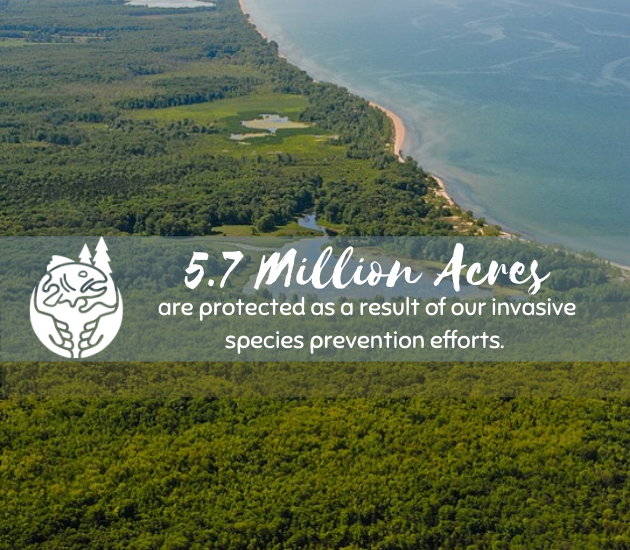A recent assessment by our PRISM and The Nature Conservancy regarding “connectivity” resulted in metrics that suggests that the 478 acres that our partnership directly manages results in a total landscape protection of some 5.7 million acres. Wow, really! To understand this we must put it into the context of ‘prevention’. What we do in the core forest of Tug Hill, such as preventing the establishment of a forest pest, along with forest restoration, helps to protect the entire 750,000- acre forest, does it not? What we do in the Oswego River and the Erie Canal with aquatic invasive species spread prevention serves to protect the Finger Lakes and nearly all connected waterways. In addition, our eDNA work in the St. Lawrence and Thousand Islands region serves to protect Lake Ontario and inland waters.
On a less scalable level, but no less important is that our work helps to maintain native and often rare plant and animal species. This past summer our early detection team, Robert Smith and Brittney Rogers, observed two protected terrestrial plant species. One being the twin-leaf (Jeffersonia diphylla) found in the eastern Lake Ontario region, and secondly the green dragon (Arisaema dracontium) which was found along the Black River. Our team also observed a rare fish species currently being reviewed for positive identification.
Carrying this work beyond our regional borders requires that we also consider the connectivity of our lands and waters. The Blue Ridge to Boreal (B2B) initiative by The Nature Conservancy is based on connected and resilient landscapes. The Blue Ridge to Boreal region stretches almost 2,000 miles along the Appalachian Mountains, across 14 states and three Canadian provinces and includes Tug Hill and the work we do there! Did I mention that protecting our forests can deliver up to 1/3 of carbon emission reductions needed by 2030! (Source TNC). Our waterways are, for the most part, all connected given the Great Lakes systems connected to almost all of New York through the Erie Canal.
Our work has far greater impact that just within our own regional footprint. By protecting and promoting native species we are in fact creating more resilient landscapes. Resilient to changes in climate, stresses by non-native species and stresses by human encroachment.



